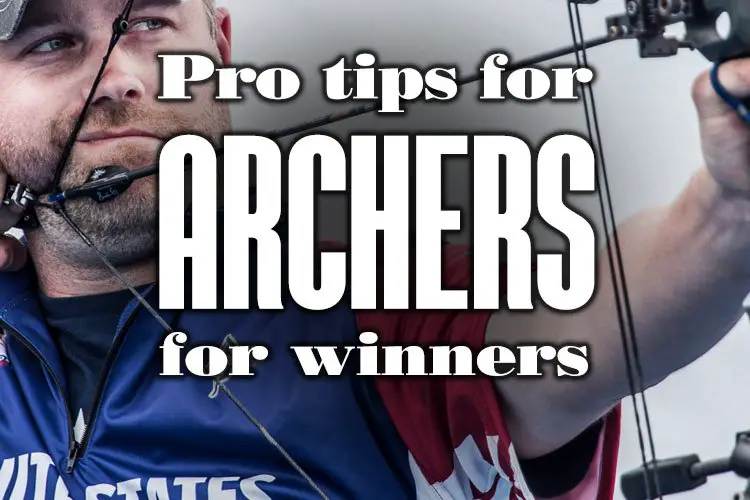[Updated 1 February 2024] For first-timers, the transition from the indoor season to the outside can be quite a shock. This is usually not due to anticipated difficulties with the weather and shooting longer distances, but rather because adding a seeming little 10 or 20 meters can expand arrow clusters substantially more than expected, especially when compared to arrow groups shot indoors, resulting in an unfavorable. In this article, we have given some Pro Tips for archers to become a winner and improve their game.
Some archers fall into the trap of thinking that indoor scores should be comparable to those shot outdoors. Anyone at any level could succumb to this error, particularly if you’ve fired enough scores indoors to acquire a handicap. On a dark, chilly evening, archers frequently compare their indoor handicap with outdoor rounds. I’ll leave it at that, except to note that most archers’ indoor scores will be higher than their outdoor ones, and they will have a handicap.
Outdoors shooting is more complex; setting up and executing each shot requires more attention. When the arrow must travel greater distances, flaws, possible problems with bow setup, or arrow choice are all increased. The weather adds a new variable to the equation, as does tiredness.
At most clubs, you will shoot six arrows outdoors before collecting your arrows, and don’t forget that you’ll be going a long way to score and retrieve them. It’s acceptable to state that if you’ve done your basic bow setup and your arrows have the correct spine, most of the modifications and changes necessary are archer-related, not equipment-based.
1. Bend at the waist
Table of Contents
It is crucial to realize that the way you shoot indoors is no different from how you shoot outside. The same “T” shape that you have mastered in the comfort of your home applies here, with one exception: how to get the arrow higher up the range so it can go further downrange. So don’t forget about the “T.
Although traditional bows and arrows are quite effective, the angle of elevation isn’t very significant. It’s not until you reach beyond 50m that the kind of arrows you utilize and the draw weight of your bow will have an impact.
The bow arm is one of the most frequent mistakes made to improve the bow. Rather than maintaining an excellent “T” form and tilting at the waist, many archers will raise their bow arms to increase height. You reduce your draw length and put everything about your draw out of line if you raise your bow arm to gain height.
So, to determine the height, keep the “T” of your draw and tilt at the waist, whether you’re shooting 18m or 90m, but don’t push the hips forward or arch the back. If you intend to use a clicker in the future, this will imply that you won’t be moving the device for each distance and that you’ll get a clearer shot.
2. Bow hand position
When the fingers of the bow hand are gripping the grip or doing the alternative, where your fingers are taut and pointed straight outward, it places tension on the bow hand. When you release the string in either instance, both events will result in riser movement and rotation.
The ideal hand position is to take advantage of the grip’s form and let your hand relax into its shapes, paying attention to regions of the hand that should be touching the grip, thumb pointing toward the target, and knuckles at a 45-degree angle. If you can’t wiggle your fingers at full draw, there’s too much tension in your hand. Not gripping the bow means that you’ll have to use a finger or bow sling to keep your bow from bouncing down the range after each shot.
When you release a bow, the center of gravity is generally behind the grip, so when you let go, it would tend to fall back, and the top limb/string will strike you on the head. This falling back isn’t great for arrow clearance. Most bows are built with a long rod in mind to counteract this, so I would recommend adding one. Not only will it cure the tipping forward, but it will also help to alleviate small tensions in your bow hand and improve your spreads.
3. Forcing the arrow to fly further
There’s a natural inclination to pull the bowstring back farther than you did before to aid in the arrow’s flight. This is, however, counterproductive and will make things worse. This is a typical problem that develops as you draw back further. If you find that your bow arm is being hit by the string as you extend it to pull back, this might be an indication of it. If this is the case, consider how you set up your bow arm and elbow turn; sometimes, when everything else is going on, forgetting to rotate the elbow results in a weak bow arm that collapses during the shot.
4. Feet position
The position of your feet and making sure you are correctly aligned with the target has a significant influence on where you are aiming genuinely and where your bow arm will end up after the shot. The grass may create optical illusions, and you might think you’re in line with the boss when you’re not. So, be cautious and make sure you maintain the same posture each time you go out on the shooting line. To keep your position correct, you may utilize foot markers to stay consistent, and ideally, you should avoid locking out your knees since this will reduce your stability in the wind.
5. The backsight
Unlike rifle shooters, recurve archers do not have a single back sight to line up with the front sight pin, so what I’m referring to as ‘the back sight’ here is actually a combination of the following:
- The position of the string on the face
- The position of the hand under the chin
- The string picture
- Posture
- A good release
Moving any of these elements even by a small amount will cause your arrows to fly offline.
Every time you fire, the fuzzy image of the string you see when aiming should overlay itself in the same place on your riser. Even if your sight pin is still on the gold, moving it left or right will move your point of aim to the left or right. High and low shots might be as easy as opening or closing your mouth, or not tightening your hand firmly enough under the jaw. These tiny variations in distance and angle will alter the eye’s relationship to the draw hand’s top. Low and high shots will be caused by having the mouth open.
6. Sight marks
When you move distances within around, most points are lost, so it’s critical to keep track of your sight marks in a notebook. You may then use these and make appropriate adjustments.
As you become more consistent, your sight marks will be nearly identical each time you fire, and at this point, you should be able to identify these on your sights (some have a white strip where you may record each distance).
7. Dropping the bow arm
The finish is similar to that of most sports; it’s critical. A good follow-through in archery is the assurance that you completed all of the procedures correctly.
Keeping the bow arm up for the duration of the arrow’s flight will prevent you from dropping your arm before the arrow has left the string, which is one of the most common reasons for inexplicable low shots. One of the greatest pleasures in archery is seeing an arrow fly and then strike dead center.
Unfortunately, if you do this when shooting your own arrows, you won’t complete the follow-through properly, resulting in the arrows flying down the range erratically. When you get it right and can sense the effortless quality of the shot knowing that it’s in gold is much more gratifying.
8. Clickers
Finally, a frequent question is whether utilizing a clicker aids in group formation at greater ranges. Yes, it will aid in better shooting consistency and tighter groups, which is why every athlete at the Olympics utilized one.
In its most basic form, a clicker is simply a draw check device that helps you to maintain the same distance between your arrow and target each time. It would be a must-have on every bow if it were that simple, but this isn’t always the case. Some coaches recommend utilizing one as soon as possible, while others urge against it. The most crucial aspect of learning to shoot with a clicker is how it’s set up and positioned to encourage proper form. When you start learning to shoot with a clicker, the most essential thing is the assistance and support you get while doing it.
I consider a well-designed clicker to be just like a testing device that confirms whether your pre-shot cycle is correct, as well as whether or not you should proceed with the shot. When things are running smoothly, using a clicker is simple, but if they aren’t, it’s possible that you’re doing something wrong. Shooting outside has a number of additional difficulties in comparison to the clean environment indoors, so I’ve outlined a few modifications and thoughts to assist you on your journey to better scores.
FAQs
What equipment do I need to start archery?
To start archery, you will need a bow, arrows, a target, and possibly a bow sight and stabilizer.
What are the different types of bows?
There are various types of bows, including recurve, compound, longbow, and crossbow.
How do I determine my draw length?
To identify your draw length, measure the distance between the pivot point of your bow handle and its rear grip plus an additional 1 3/4 inches.
What is the best way to improve my accuracy?
To improve accuracy, practice regularly and focus on proper form, aiming, and release technique. Consider using a bow sight or seeking professional coaching.
What is the ideal arrow weight for my bow?
The ideal arrow weight for your bow will depend on the specifications of your bow and personal preference, but as a general rule, a heavier arrow will provide more stability in flight but also slower speed, while a lighter arrow will travel faster but be less stable.
How can I maintain my bow?
To maintain your bow, regularly inspect it for any signs of damage or wear and clean it after each use. Store it in a dry place and use a bow case for transportation.
How often should I replace my arrows?
Arrow lifespan depends on usage and storage, but inspecting arrows after each use and replacing them if they show signs of damage, such as cracks or bent shafts, is generally recommended.
Conclusion
In conclusion, archery is a challenging yet rewarding sport that requires physical and mental skills. Consistent practice, proper equipment selection, and an effective shooting routine are all essential steps toward becoming a successful archer. Also, good form, techniques, and staying focused and calm under pressure can significantly improve your accuracy and overall performance. Stay patient, set achievable goals, and seek guidance from experienced archers. With dedication and hard work, you can hone your skills and reach new levels in your archery journey.







